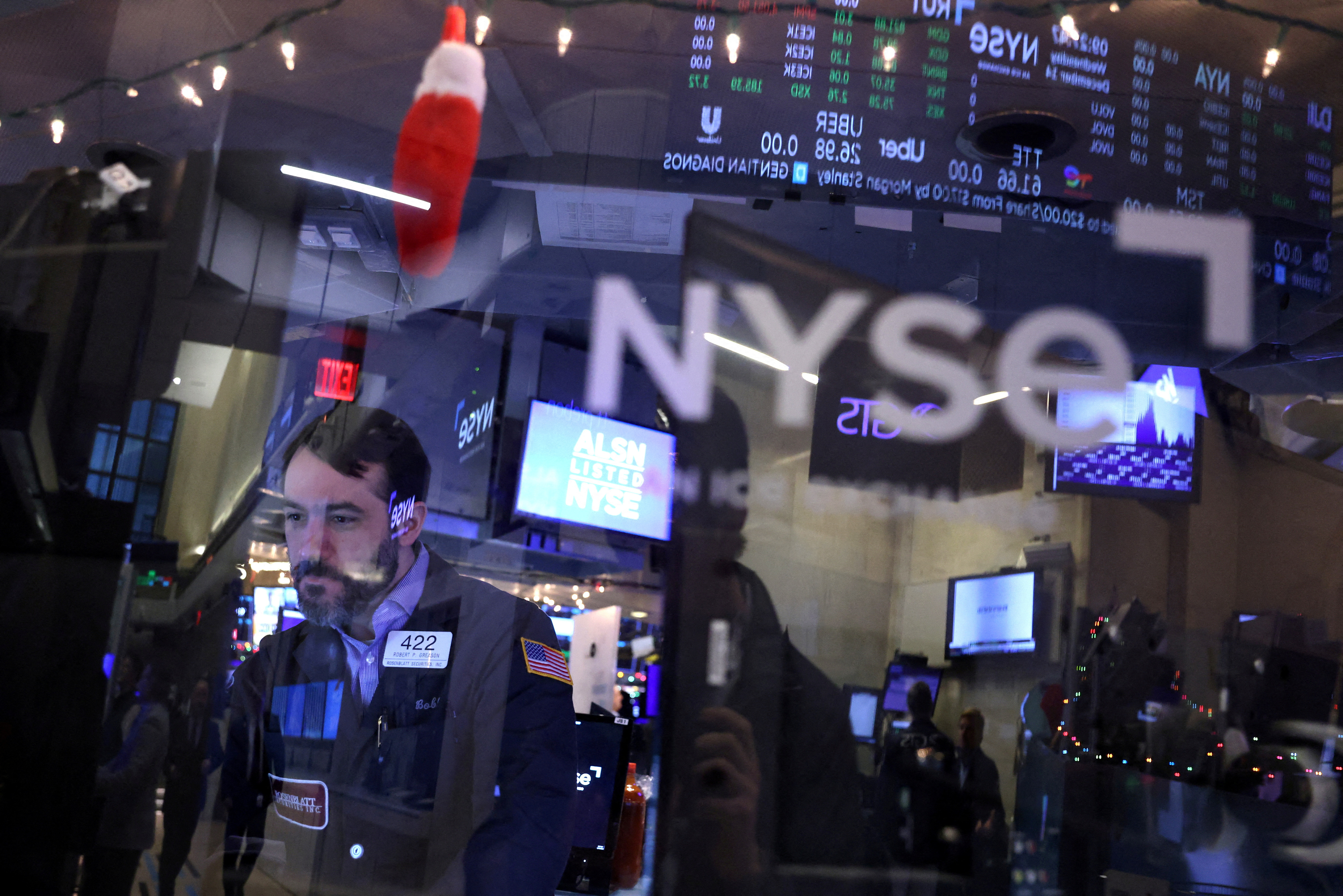
U.S. stocks fell on Friday as growth shares dipped in the final trading session of a year marked by aggressive interest rate hikes to curb inflation, recession fears, the Russia-Ukraine war and rising concerns over COVID cases in China.
Wall Street’s three main indexes are on track for their first yearly drop since 2018 as an era of loose monetary policy ended with the Federal Reserve’s fastest pace of rate hikes since the 1980s.
The indexes are also set to post their biggest yearly declines since the 2008 financial crisis, largely driven by growth shares as the Fed’s rate hikes boosted U.S. Treasury yields and made stocks less attractive.
Growth stocks have been under pressure from rising yields for much of 2022 and have underperformed their economically linked value peers, reversing a trend that had lasted for much of the past decade.
Apple Inc (AAPL.O), Alphabet Inc (GOOGL.O), Microsoft Corp (MSFT.O), Nvidia Corp (NVDA.O), Amazon.com Inc (AMZN.O), Tesla Inc (TSLA.O) are among the worst drags on the S&P 500 growth index (.IGX), down between 28% and 66% in 2022.
The S&P 500 growth index has fallen about 30.5% this year, while the value index (.IVX) is down 7.7%, with investors preferring high dividend-yielding sectors with steady earnings such as energy.
Energy (.SPNY) has recorded stellar annual gains of 58% due to a surge in oil prices.
Ten of the 11 S&P (.SPX) sector indexes dropped on Friday, led by real estate and utilities.
“The housing market has really slowed down and the values of people’s homes have declined off of the highs earlier this year,” said J. Bryant Evans, investment advisor and portfolio manager at Cozad Asset Management in Champaign, Illinois.
“That, along with a slightly weakening job picture, is probably affecting … the market right now economically. And then on the back of everyone’s mind is China as they loosen up their policies toward COVID restrictions and as they open up their economy.”
The focus has turned to the 2023 corporate earnings outlook, with growing concern about the likelihood of a recession.
Still, signs of U.S. economic resilience have fueled worries that rates could stay higher for longer, though easing inflationary pressures have raised hopes of dialed-down rate hikes.
Money market participants see 65% odds of a 25-basis-point hike in the Fed’s February meeting, with rates expected to peak at 4.97% by mid-2023.
At 3:00 p.m. ET, the Dow Jones Industrial Average (.DJI) fell 321.86 points, or 0.97%, to 32,898.94; the S&P 500 (.SPX) lost 42.36 points, or 1.10%, at 3,806.92; and the Nasdaq Composite (.IXIC) dropped 117.38 points, or 1.12%, to 10,360.70.
U.S.-listed shares of Shaw Communications Inc jumped 9.6% after Canada’s antitrust tribunal approved rival Rogers Communications Inc’s (RCIb.TO) C$20 billion ($14.77 billion) bid for the telecom company.
Declining issues outnumbered advancers on the NYSE by a 2.42-to-1 ratio; on Nasdaq, a 1.77-to-1 ratio favored decliners.
The S&P 500 posted no new 52-week highs and no new lows; the Nasdaq Composite recorded 56 new highs and 116 new lows.

